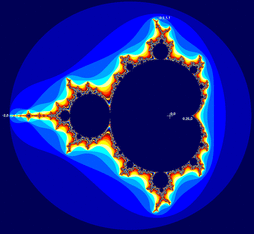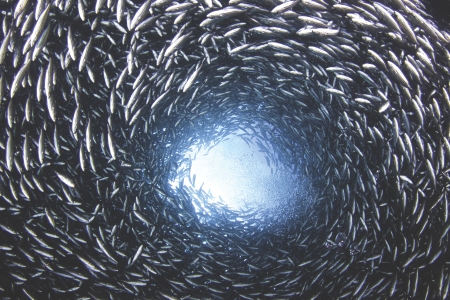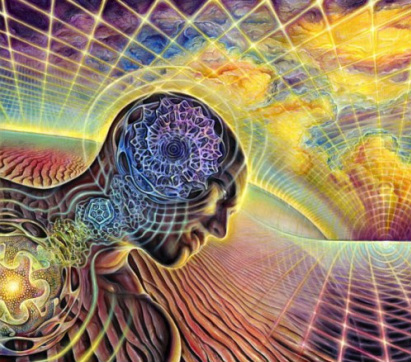Here are some important principles that liology shares with dynamical systems theory, followed by some crucial reinterpretations.
SHARED PRINCIPLES
look to nature's principles of organization
Dynamical systems theory states that the natural world can only be properly understood by recognizing and identifying the organizing principles of the nonlinear systems by which everything interconnects, as opposed to focusing only on the things themselves. This holds true for our climate, ecosystems, organisms and cells, and equally for those systems within us: our immune system, cardiac and respiratory systems, our nervous system - even our own consciousness.
Liology sees this focus on the principles by which everything interconnects as the foundation for understanding ourselves and our cosmos.
Liology sees this focus on the principles by which everything interconnects as the foundation for understanding ourselves and our cosmos.
the whole is greater than the sum of its parts
|
The principle of emergence describes how, in a complex system, the whole has an identity of its own, and can't be predicted by considering all of its subcomponents in isolation. The most dramatic examples of this can be seen in such natural phenomena as the intelligence of ant colonies, the original emergence of life on the earth, and the existence of consciousness arising from the complex interactions of neurons in our brains.
Liology views the principle of emergence as essential in understanding the dynamics of our human organism and our interactions with the rest of nature. |
nature exhibits self-organization
|
The intrinsic intelligence of nature arises from a process of self-organization, rather than any external source. The way that starlings flock, fish swim, plants grow, ant colonies work, and our stomachs digest food - all these and countless other processes of nature show a profound self-organized intelligence arising from each entity doing what it naturally does while interacting with those around it.
Liology calls this form of intelligence "animate intelligence" which humans also possess in addition to our more frequently recognized "conceptual" intelligence. |
simultaneous top-down, bottom-up dynamics
All living organisms - cells, animals, humans - and some highly complex systems such as climate and ecosystems can only be understood by recognizing the simultaneous dynamics of the whole system acting on all the parts (top/down) and the separate parts acting together on the whole (bottom/up). This has been referred to as "reciprocal causality."
Liology recognizes that this principle is key to understanding not only other natural systems but also how our own consciousness works and how we create our own sense of a self.
Liology recognizes that this principle is key to understanding not only other natural systems but also how our own consciousness works and how we create our own sense of a self.
dynamical systems fluctuate within stable parameters
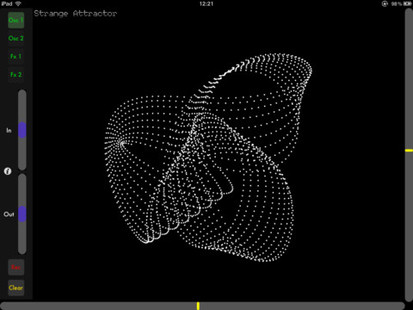
This seemingly simple statement is a crucial part of understanding all natural systems - including ourselves - and is foundational to both systems thinking and liology.
In physics and mathematics, an attractor is the name for the states in the phase space that a system converges to over time. A swinging pendulum, for example, eventually stops in one place, which is called a point attractor.
Natural systems, however, are always fluctuating within their phase space. They are never exactly the same. They can't be exactly predicted. And yet there are boundaries to how they fluctuate. The fluctuations of these natural systems are called in physics strange attractors.
Yet, in fact, there's nothing strange about these attractors. They are the most natural things in the universe. What's really strange are the unnaturally fixed boundaries created by human systems. So, liology calls them instead natural attractors.
Natural attractors are everywhere. The flow of a river. The shape of a cloud. The growth of a tree. The waves on the beach. And they are equally present within us. In our moods, our thought patterns, our relationships.
Liology sees understanding natural attractors as a key part of understanding the natural world and ourselves.
In physics and mathematics, an attractor is the name for the states in the phase space that a system converges to over time. A swinging pendulum, for example, eventually stops in one place, which is called a point attractor.
Natural systems, however, are always fluctuating within their phase space. They are never exactly the same. They can't be exactly predicted. And yet there are boundaries to how they fluctuate. The fluctuations of these natural systems are called in physics strange attractors.
Yet, in fact, there's nothing strange about these attractors. They are the most natural things in the universe. What's really strange are the unnaturally fixed boundaries created by human systems. So, liology calls them instead natural attractors.
Natural attractors are everywhere. The flow of a river. The shape of a cloud. The growth of a tree. The waves on the beach. And they are equally present within us. In our moods, our thought patterns, our relationships.
Liology sees understanding natural attractors as a key part of understanding the natural world and ourselves.
all life on earth is linked through a holarchy
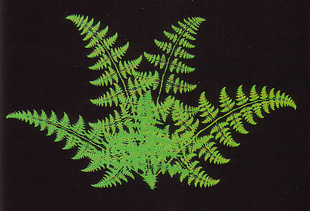
The patterns of natural attractors tend to exhibit a fractal relationship: repeating themselves at bigger and bigger scales. Ultimately, all attractors in the natural world form a holarchy: a meta-system of irreducible wholes that are themselves part of larger wholes, ultimately comprising all life on earth from a single cell to the entire planetary ecosphere.
The recognition that each of us - and all of humanity - are an integral part of the holarchy of life on the earth forms a important philosophical foundation for liology.
The recognition that each of us - and all of humanity - are an integral part of the holarchy of life on the earth forms a important philosophical foundation for liology.
life is negative entropy
The 2nd law of thermodynamics states that systems move to maximum entropy - decreased complexity - over time. Recognizing that life is an emergent form of self-organized complexity, leading physicists (notably Schrödinger & Prigogine) have described life itself as negative entropy or negentropy.
This would hold true for any kind of life existing anywhere in the universe. This insight has important implications for liology in identifying the ultimate source of meaning in our embodied existence.
This would hold true for any kind of life existing anywhere in the universe. This insight has important implications for liology in identifying the ultimate source of meaning in our embodied existence.
REINTERPRETATIONS
the organizing principles are the li
The organizing principles of the natural world described in complexity theory and systems biology correspond to the li described in traditional Chinese thought as the manifestation of the Tao. This correspondence is not superficial but intrinsic to both systems of thought, which permits each system to build from the other.
Liology begins with this correspondence to construct a pathway for exploring the profound ethical and spiritual implications arising from dynamical systems theory. It also provides a framework for systems-based interpretations of age-old Western philosophical issues such as how mind arises from brain, theories of self and free will, the source of ethics and morality, and how to live harmoniously and sustainably in the natural world.
Liology begins with this correspondence to construct a pathway for exploring the profound ethical and spiritual implications arising from dynamical systems theory. It also provides a framework for systems-based interpretations of age-old Western philosophical issues such as how mind arises from brain, theories of self and free will, the source of ethics and morality, and how to live harmoniously and sustainably in the natural world.
intrinsic connectivity is a source of mystical experience
|
Dynamical systems theory teaches us that all living things are profoundly and extensively interconnected through a holarchy.
Throughout the world and throughout history, people have had deeply moving mystical experiences which have changed their lives, usually involving a sense of oneness and dissolving of the normal boundaries of the self. Depending on their cultural context, they have interpreted these experiences differently. Liology recognizes the validity of these experiences from a dynamical systems perspective - regardless of the cultural context - as a deeply embodied realization of a person's intrinsic connectedness and oneness with the natural universe. As such, liology sees these experiences as pointing the way to the most profound meaning in life. |
life as negative entropy is the ultimate source of meaning

For four billion years, life has been evolving on the earth, reaching ever greater levels of complexity, reversing the entropy of the universe. From individual cells to human beings, organisms have an intrinsic purpose to live, reproduce and continue to reverse the course of entropy.
When we recognize our fundamental interconnectedness with all other life, we can begin to permeate the boundaries of self and identify with all life in the universe. This can lead to a sense of deep purpose and meaning in our embodied existence without seeking a transcendent source of meaning from another dimension.
When we recognize our fundamental interconnectedness with all other life, we can begin to permeate the boundaries of self and identify with all life in the universe. This can lead to a sense of deep purpose and meaning in our embodied existence without seeking a transcendent source of meaning from another dimension.
"li maximization" offers a natural system of human ethics
Liology proposes that values and ethics do not have to be sought from external authorities nor from community norms, but emerge naturally from our intrinsic connectedness with all of life. Liology sees value corresponding to the increased complexity of the li of a system. This naturally values life - and especially advanced forms of life such as humans, elephants, dolphins and entire ecosystems - above less complex forms of self-organization.
While the principle of li maximization doesn't necessarily simplify the choices we make in our lives, it provides an intrinsically meaningful framework for us to evaluate these choices. Li maximization will tend to emphasize qualities of harmonization, connectedness and integration in its framework for ethical choices.
While the principle of li maximization doesn't necessarily simplify the choices we make in our lives, it provides an intrinsically meaningful framework for us to evaluate these choices. Li maximization will tend to emphasize qualities of harmonization, connectedness and integration in its framework for ethical choices.
Click here to download and read some key academic journal articles on dynamical systems theory and emergence:
Mesarovic, M. D., Sreenath, S. N., & Keene, J. D. (2004). "Search for organising principles: understanding in systems biology." Systems Biology.
Thompson, E., & Varela, F. J. (2001). "Radical embodiment: neural dynamics and consciousness." Trends in Cognitive Sciences.
Sumpter, D. J. T. (2006). "The principles of collective animal behaviour." Phil. Trans. R. Soc. Lond. B.
Mesarovic, M. D., Sreenath, S. N., & Keene, J. D. (2004). "Search for organising principles: understanding in systems biology." Systems Biology.
Thompson, E., & Varela, F. J. (2001). "Radical embodiment: neural dynamics and consciousness." Trends in Cognitive Sciences.
Sumpter, D. J. T. (2006). "The principles of collective animal behaviour." Phil. Trans. R. Soc. Lond. B.

